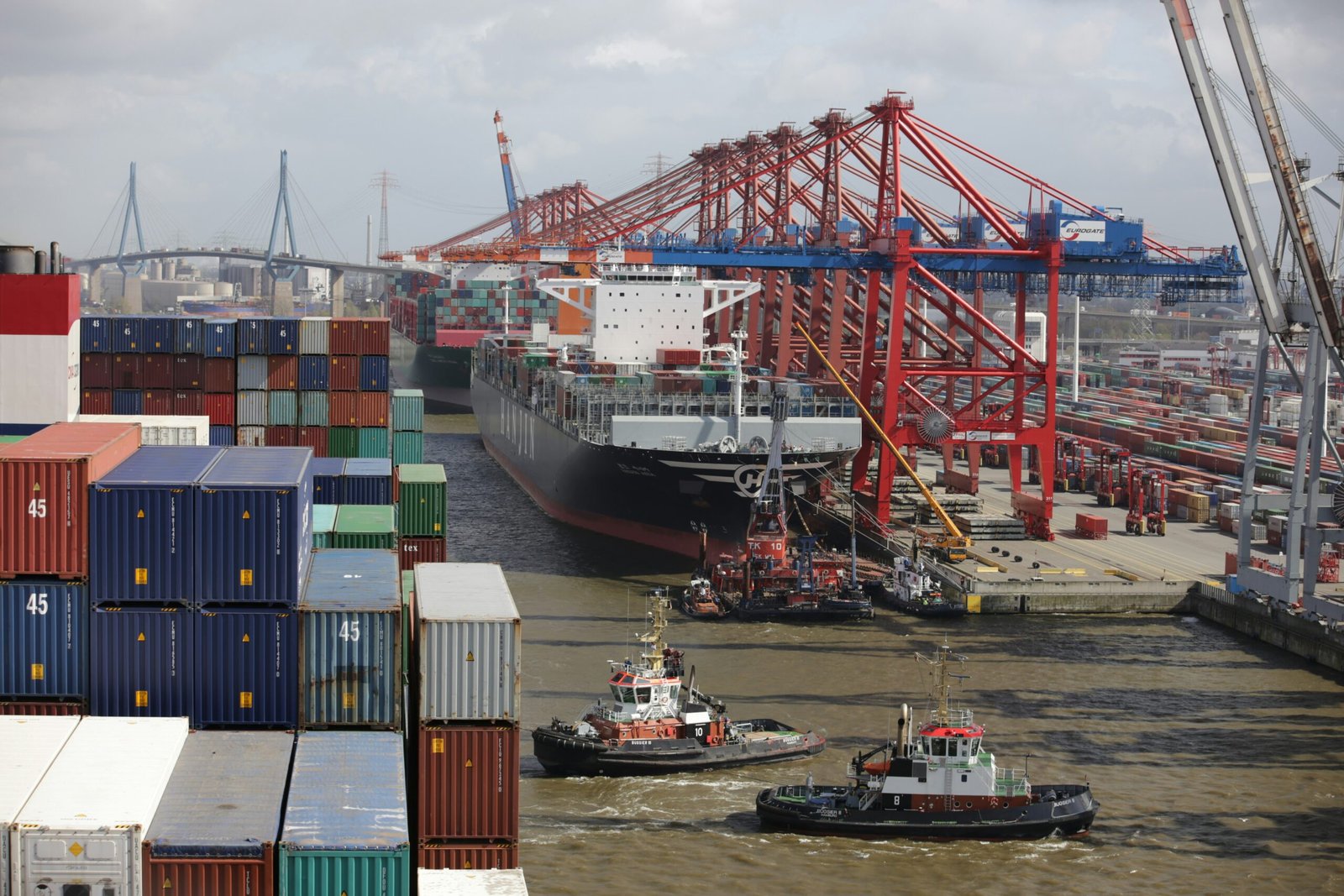Introduction to Sustainable Products
Sustainable products are defined as goods designed, manufactured, and marketed in a way that minimizes their ecological impact.
This involves utilizing biodegradable materials, ensuring ethical sourcing, and promoting energy-efficient production methods.
The growing demand for sustainable solutions has shifted consumer preferences towards those who consciously choose eco-friendly imports over conventional options.
This trend emphasizes not only the tangible aspects of products but also their origins and the practices involved in their creation and distribution.
One key characteristic of sustainable products is their use of biodegradable materials. These materials break down naturally, reducing waste and pollution.
Consumers are increasingly aware of the life cycle of products, leading to a rise in demand for items that contribute to a healthier planet.
Furthermore, ethical sourcing, which ensures that materials are obtained from responsible suppliers, has become an indispensable aspect of the sustainable product paradigm.
This practice not only protects the environment but also champions fair labor practices, fostering a sense of responsibility in both producers and consumers.
Energy-efficient production methods are another significant component of sustainable products.
By utilizing renewable energy sources and minimizing energy waste, manufacturers can significantly lower their carbon footprint.
This is essential in the context of global climate change and reflects a broader commitment to green trade principles.
As consumers seek to align their purchases with their values, the sustainability of products is becoming a critical factor in purchasing decisions.
Accompanying this shift is a robust discussion about the implications for import and export practices, as governments, businesses, and individuals strive to embrace sustainability as a core principle in the global marketplace.
The Rise of Eco-Friendly Products in Global Trade
The global marketplace has witnessed a notable shift in consumer preferences over the last few years, particularly leaning towards eco-friendly products.
As awareness of sustainability issues intensifies, individuals increasingly demand goods that are not only beneficial for their personal well-being but also for the planet.
This rising consumer consciousness has generated substantial growth in the sector of eco-friendly imports, which now plays a significant role in global trade.
Recent data demonstrates that the sustainable product market has surged, with reports indicating a compound annual growth rate (CAGR) of over 10% among companies labeled as “green” or “eco-friendly.”
According to industry experts, this trend reflects a broader societal shift, as consumers, especially Millennials and Generation Z, prioritize environmentally responsible brands and products.
These younger consumers are fueling the market with a demand for goods that align with their values, fundamentally transforming the landscape of global trade.
Furthermore, governmental policies and corporate regulations have been progressively adjusting to accommodate and promote sustainable practices.
Many countries are implementing stricter environmental standards for imports and exports, thereby encouraging businesses to explore eco-friendly options in their supply chains.
The focus on green trade initiatives has spurred investments in sustainable technologies and materials, pushing manufacturers and importers alike to source eco-friendly products to meet evolving market expectations.
Statistics highlight that 70% of consumers are willing to pay a premium for sustainable products, indicating a crucial shift in purchasing behavior.
As retailers adapt to this surge in commitment to sustainability, eco-friendly imports are not merely a trend but signify a long-term transformation in the global trade arena.
With optimism fueled by these changes, the marketplace is poised for further growth in eco-friendly options leading into 2024 and beyond.
Regulatory Changes and Their Impact
The import and export market is increasingly influenced by regulatory changes aimed at promoting sustainability and encouraging eco-friendly imports.
As we move into 2024, a number of pivotal regulations and governmental policies are expected to emerge and reshape trade practices across various sectors.
The focus on green trade is being recognized not only as a necessity for environmental stewardship but also as a critical driver of economic growth in the context of global markets.
International agreements play a significant role in this landscape. Various countries are actively participating in global initiatives to reduce carbon emissions, with commitments to uphold standards that favor sustainable goods.
These agreements foster collaboration among nations, facilitating the exchange of eco-friendly imports while encouraging exporters to adhere to higher environmental standards.
Countries that comply with these international mandates gain a competitive edge, often leading to increased market access and reduced tariffs on green products.
Furthermore, regulatory changes include the imposition of tariffs on non-sustainable goods, which serve as a deterrent for companies that fail to prioritize environmentally responsible practices.
These tariffs create a financial incentive for businesses to shift towards eco-friendly alternatives, ultimately fostering a market that is more favorable to sustainable trade.
Additionally, government incentives for green products enhance the appeal of adopting sustainable practices, encouraging manufacturers and importers to focus on innovative, environmentally conscious offerings.
In summary, the regulatory landscape for 2024 indicates a significant shift towards supporting eco-friendly trade practices.
As governments increasingly advocate for green trade through international agreements and tariffs, companies engaged in imports and exports will need to adapt to these changes.
Embracing sustainability not only fosters compliance with emerging regulations but also positions businesses to thrive in an evolving global market that values responsible trade practices.
Challenges in Importing and Exporting Sustainable Products
The shift towards eco-friendly imports and sustainable product offerings in the global market has brought various challenges for businesses navigating this evolving landscape.
As companies endeavor to engage in green trade, they encounter a myriad of obstacles that can impede progress and hinder market entry.
One prevalent challenge is the complexity of supply chains. Sustainable products often rely on ethically sourced materials, requiring businesses to establish transparent, reliable, and ethical supply chains.
This can lead to difficulties in tracing the origin of materials, ensuring fair labor practices, and maintaining environmental standards throughout the supply process.
Moreover, disruptions such as natural disasters or geopolitical tensions can exacerbate these complexities, often resulting in delays and increased costs.
Certification processes pose another hurdle to businesses focused on eco-friendly imports.
Obtaining the necessary certifications to prove that a product meets sustainability standards can be both time-consuming and expensive.
Many markets demand rigorous compliance, and navigating these multifaceted regulations can discourage businesses from pursuing sustainable options.
Heightened consumer awareness and the desire for responsibly sourced products only amplify the competition faced by conventional products, which may not adhere to the same ecological or ethical benchmarks.
Additionally, the costs associated with sustainable products often exceed those of traditional goods.
The investment required for environmentally friendly production methods, sustainable materials, and compliance with regulations can be daunting for many businesses.
As a result, pricing strategies must be adjusted, frequently making it challenging to compete with cheaper, conventional alternatives.
Addressing these challenges requires companies to invest in strategic initiatives.
Collaborating with suppliers to foster transparency, simplifying certification pathways, and educating consumers about the benefits of choosing sustainable options can pave the way for a more robust engagement in green trade.
By focusing on innovation and resilience, businesses can effectively navigate the complexities of importing and exporting sustainable products.
Market Share of Sustainable Products in 2024
As the global demand for eco-friendly imports continues to rise, the market share of sustainable products is projected to demonstrate significant growth in 2024.
Various sectors, including textiles, food, and packaging, are witnessing a distinct shift towards greener alternatives, reflecting the growing consumer preference for products that align with environmental sustainability principles.
Recent studies indicate that the sustainable textiles market is expected to increase substantially, driven by the introduction of biodegradable fabrics and recycled materials.
Retailers and manufacturers are prioritizing eco-conscious sourcing, which in turn elevates the demand for sustainable imports.
In the food sector, the trend towards organic and locally-sourced products is anticipated to contribute to a notable expansion in market share.
Consumers are becoming increasingly aware of the environmental impact of their food choices, leading to a surge in demand for organic foods and sustainable agricultural practices.
Regions focusing on ethical farming and minimal-processing techniques are likely to capture larger shares of the market, making green trade a focal point for importers and exporters alike.
Packaging is another sector where sustainable products are carving out a significant market presence.
With stringent regulations surrounding plastic use, businesses are innovating with eco-friendly materials such as compostable and reusable packaging.
This trend is supported by advancements in technology that make sustainable packaging more accessible and affordable.
Different geographical regions are at varying stages of this transition; while developed markets may lead the charge in implementing these practices, emerging economies are also beginning to acknowledge the importance of sustainable imports as part of their economic development strategies.
Overall, the trajectory for sustainable products in 2024 looks promising, with expected growth rates surpassing those of traditional products.
As consumers, businesses, and governments increasingly commit to sustainability, the landscape of imports and exports is poised for transformative change.
Technological Innovations Supporting Sustainability
The landscape of eco-friendly imports and sustainable trade is rapidly evolving, with various technological advancements playing a crucial role in fostering this growth.
Innovations in production methods are significantly enhancing sustainability in the import and export market.
For instance, the adoption of precision agriculture techniques allows for more efficient use of resources such as water and fertilizers, minimizing waste and environmental impact.
This not only leads to the production of greener goods but also supports the overall initiative of sustainable trade.
Another key area of advancement is the development of conservation technologies, which focus on reducing the ecological footprint of various industries.
Innovations such as biodegradable materials and renewable energy sources for manufacturing processes are becoming more widespread.
These technologies help in curtailing carbon emissions and promoting eco-friendly imports, as businesses become more conscious of their environmental responsibilities.
Improved logistics also play a vital role in sustainable product trade by ensuring lower carbon footprints.
Companies are increasingly utilizing advanced supply chain management systems that optimize routes and shipping methods.
This helps in reducing fuel consumption and emissions during transportation, further contributing to the green trade ecosystem.
Additionally, the incorporation of electric and hybrid vehicles into shipping fleets illustrates the shift towards more sustainable practices in logistics.
Digital platforms have emerged as pivotal tools in promoting transparency and ethical sourcing within the market.
These platforms facilitate communication between consumers and producers, enabling customers to make informed decisions regarding their eco-friendly imports.
By utilizing blockchain technology, for instance, businesses can trace the origins of their products, assuring consumers of their sustainability credentials.
This level of transparency not only builds trust but also encourages greater participation in the green trade.
Case Studies: Successful Companies in Sustainable Trade
In the evolving landscape of global trade, several companies have emerged as leaders in the eco-friendly imports sector, demonstrating how sustainable practices can also lead to robust business frameworks.
One notable example is UncommonGoods, an online marketplace that specializes in handmade and sustainable goods.
Established in 1999, it emphasizes the significance of meaningful connections between creators and consumers.
By prioritizing eco-friendly imports, the company not only appeals to environmentally conscious customers but also ensures that the items it sources are manufactured in a sustainable manner, adhering to fair trade principles.
This model has allowed UncommonGoods to cultivate a loyal customer base and achieve steady growth.
Another impressive case study can be drawn from the operations of Patagonia, an outdoor clothing retailer known for its commitment to environmental sustainability.
The company has pioneered the use of recycled materials in its products and promotes a culture of responsible consumption.
Patagonia’s “Worn Wear” program, which encourages customers to repair and reuse their gear, is a pivotal strategy that successfully integrates eco-friendly practices within their business model.
Their authentic storytelling regarding sustainability, combined with transparent supply chains, has not only fostered brand loyalty but also positioned them as a leader in the green trade arena.

Furthermore, IKEA has made significant strides in eco-friendly imports through its “People & Planet Positive” strategy.
The company aims to procure all of its wood, paper, and cotton from more sustainable sources by 2020, a goal it has largely met.
IKEA’s commitment to creating a circular economy by rethinking product design and material usage showcases the construction of a sustainable supply chain that thrives on innovation.
Best practices derived from these successful companies illustrate that investing in sustainable and ethical trading methods is not only feasible but can also yield significant economic benefits while positioning a brand favorably in a competitive market.
Consumer Awareness and Trends
As the global marketplace continues to evolve, consumer awareness has increasingly become a pivotal factor in driving the growth of sustainable products within the realm of international trade.
An informed consumer base is not only more likely to prioritize eco-friendly imports, but it also influences the practices of companies involved in green trade.
Market dynamics are shifting, and it is crucial for businesses to understand these changing preferences.
The rise of conscious consumerism is notable, with individuals seeking products that reflect their values, particularly concerning environmental stewardship.
Marketing strategies have also adapted to this trend, with companies emphasizing the sustainability of their goods.
This approach not only helps in attracting environmentally-minded consumers but also educates the wider audience on the benefits of eco-friendly imports.
Businesses are leveraging social media platforms and digital marketing tools to raise awareness about the ecological impact of their products, thereby fostering a more conscious shopping behavior among consumers.
Furthermore, education plays a critical role in shaping consumer preferences. By providing information about the materials, sourcing, and production methods involved in their products, companies can effectively engage potential customers.
This transparency fosters trust and helps consumers make informed decisions, steering them toward products that align with their environmental values.
Trade shows, workshops, and online tutorials serve as excellent platforms for businesses to showcase their commitment to sustainable practices, ultimately contributing to the overall growth of eco-friendly imports.
Aggressive marketing and educational initiatives, coupled with the prevalence of green certifications, enhance consumer confidence in sustainable products.
As the demand for eco-friendly imports continues to rise, companies that adapt to these emerging consumer trends are poised to thrive in the ever-evolving landscape of global trade.
Future Prospects and Conclusion
The significance of sustainable practices in the global import and export market is becoming increasingly evident as we approach 2024.
The shift towards eco-friendly imports is no longer a trend but a necessary evolution driven by consumer demand, regulatory changes, and the urgent need to tackle climate change.
Businesses across various sectors are exploring green trade alternatives, striving to align their practices with sustainability goals.
This transition leads to the emergence of new markets and opportunities designed to meet the evolving expectations of ethically minded consumers.
One of the key components shaping the future of sustainable products in international trade is the advancement of technology.
Innovations in supply chain logistics, such as more efficient transportation methods and biodegradable packaging, contribute significantly to reducing the carbon footprint associated with global commerce.
Furthermore, businesses are increasingly adopting transparent supply chains, allowing consumers to trace the origin of products and verify their eco-friendly claims.
This transparency is pivotal in fostering trust and encouraging a more conscientious consumption pattern.
Looking ahead, we can anticipate stronger collaborations between governments, businesses, and non-governmental organizations to promote eco-friendly imports.
Many countries are expected to introduce more stringent regulations and incentives aimed at fostering green trade, further compelling companies to adopt sustainable practices.
Moreover, as environmental awareness continues to rise among consumers, brands that prioritize eco-friendly products will likely gain a competitive advantage in the market.
In conclusion, the future of sustainable products in the import and export market appears promising as we navigate through 2024 and beyond.
The ongoing evolution towards eco-friendly imports, backed by technological advancements and growing consumer awareness, paints a bright picture for the green trade landscape.
Stakeholders must remain adaptable and committed to sustainability, ensuring the lasting impact of these practices is realized globally.








